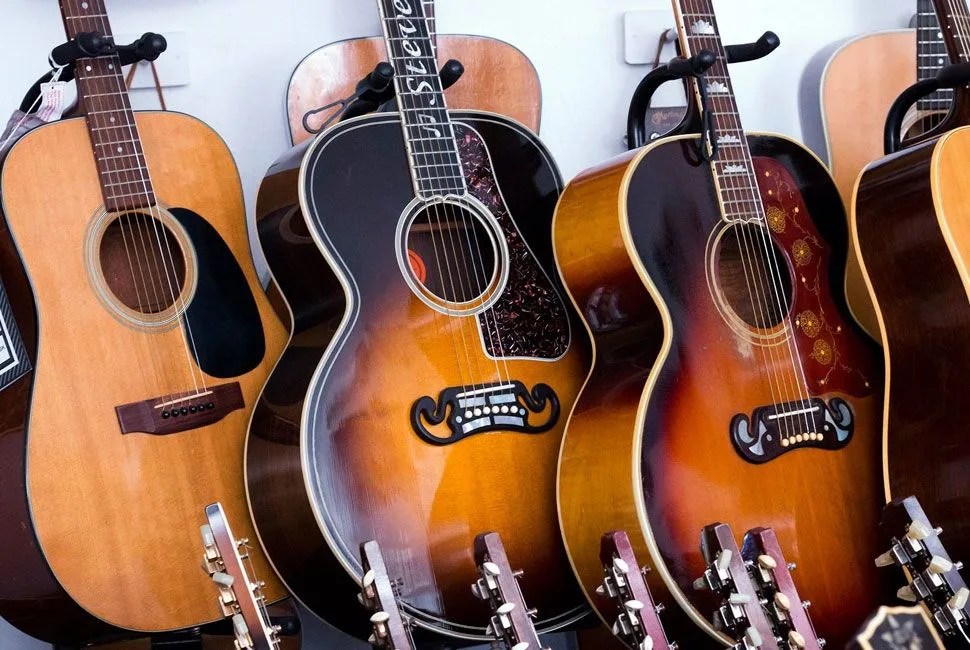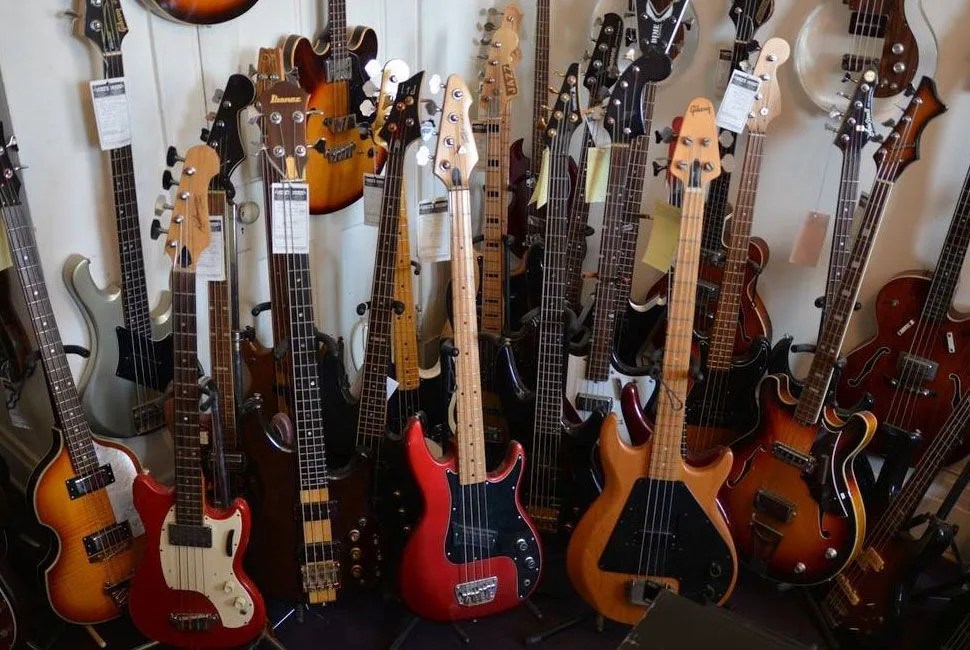From the street, Mike’s Music looks like Swedish kitsch. Devoid of clean lines, its wood-shingle awning and barn-askew clapboards bespeak a Midwestern-Nordic collision that has outlived every other building on the block. And it’s a block, it must be said, that has settled into itself with age. Apart from Mike’s, this particular stretch of Cincinnati’s Vine Street is a middling retail draw. Next door is a head shop in the throes of a bong and black-light fire sale; next to that, an adult bookstore called Saturday’s (“No Kids, No Babies, No Strollers”); and just down a ways, somewhat predictably, a Papa John’s.
Which is to say that you’re not quite prepared for what awaits inside Mike’s. Before eyes can be made to adjust and wits jimmied loose, you’re staring point-blank down the rosewood-and-mahogany barrels of several custom Les Pauls, pearly inlays shining like bars of fluorescent light. In fact, all manner of vintage Gibson is sprawled out around you, some of it very serious payload worth upwards of the Audi Q5 parked incongruously out front. Were this L.A. or New York, the entryway alone would’ve long ago marked Mike’s as a camera-strap tourist portal. But because it’s in boondocks Cinci, where it shares sidewalk with Saturday’s, it’s the inverse of that, something more akin to a well-loved local taco stand.
After you pry yourself from the front room, you’re in the Fender space. One after the other they appear, hypnotically at first — 1970s Stratocasters, despite their glam and glow, are like relics from lost worlds, cosmic and impermeable — then in ever-increasing bandwidth, until you’re sick at heart at never having owned anything so pretty. Next comes a field of Marsh amps, which make a nice palate-cleanser before you plunge into a warren of sideline models like Charvel, Danelectro, Rickenbacker, Gretsch. Up a level is the acoustic room, the bass room, the keyboard room, and the drums room. All the way up top lies the interplanetary, museum-quality shit, where you might find, say, a $70,000 Gretsch Penguin or a $200,000 Martin Dreadnought, as well as a whole new range of emotions for processing things.
All of this is the purview of a guy named Mike Reeder. Reeder grew up across the river in Kentucky, the son of a railroad man. At age seven he was baptized in the fire of rock ‘n’ roll by his older brother, who introduced him to the Beatles, the Who, the Stones, etc. The music seemed immutable proof of a higher order, a gateway to sonic rapture, and Reeder has spent the rest of his life, in one way or another, attempting to distill it. There were years of drifting around L.A., of factotum in-betweenness, of playing in ’80s cover bands, Zeppelin cover bands, blues-soul cover bands, and the inexorable wedding band. Until an epiphany struck in 1991.
“I remember finding a few Goldtop Deluxes,” Reeder says of the classic Gibson shredded by face-melters like Page and Townshend. “I bought three in one week and sold them all for a profit. I was like, ‘Oh.’”
All the way up top lies the interplanetary, museum-quality shit, where you might find, say, a $70,000 Gretsch Penguin or a $200,000 Martin Dreadnought, as well as a whole new range of emotions for processing things.
That year, he opened his first shop, a puffed-up flea market with a few vintage guitars stashed among the ancient pie-safes and ladder-back rockers. Collecting morphed inevitably into obsession. From the moment he opened the Vine Street shop in 1993, Reeder was a man on the run. Leaving his wife in charge, he roamed the countryside, buying up whatever he could find. As it turned out, Reeder had stumbled into the vintage guitar market more or less at its genesis.

